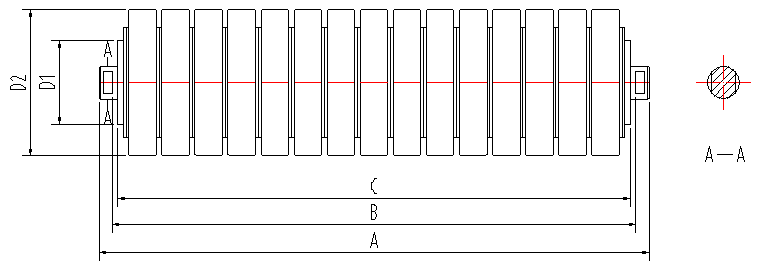 Afrikaans
Afrikaans  Albanian
Albanian  Amharic
Amharic  Arabic
Arabic  Armenian
Armenian  Azerbaijani
Azerbaijani  Basque
Basque  Belarusian
Belarusian  Bengali
Bengali  Bosnian
Bosnian  Bulgarian
Bulgarian  Catalan
Catalan  Cebuano
Cebuano  Corsican
Corsican  Croatian
Croatian  Czech
Czech  Danish
Danish  Dutch
Dutch  English
English  Esperanto
Esperanto  Estonian
Estonian  Finnish
Finnish  French
French  Frisian
Frisian  Galician
Galician  Georgian
Georgian  German
German  Greek
Greek  Gujarati
Gujarati  Haitian Creole
Haitian Creole  hausa
hausa  hawaiian
hawaiian  Hebrew
Hebrew  Hindi
Hindi  Miao
Miao  Hungarian
Hungarian  Icelandic
Icelandic  igbo
igbo  Indonesian
Indonesian  irish
irish  Italian
Italian  Japanese
Japanese  Javanese
Javanese  Kannada
Kannada  kazakh
kazakh  Khmer
Khmer  Rwandese
Rwandese  Korean
Korean  Kurdish
Kurdish  Kyrgyz
Kyrgyz  Lao
Lao  Latin
Latin  Latvian
Latvian  Lithuanian
Lithuanian  Luxembourgish
Luxembourgish  Macedonian
Macedonian  Malgashi
Malgashi  Malay
Malay  Malayalam
Malayalam  Maltese
Maltese  Maori
Maori  Marathi
Marathi  Mongolian
Mongolian  Myanmar
Myanmar  Nepali
Nepali  Norwegian
Norwegian  Norwegian
Norwegian  Occitan
Occitan  Pashto
Pashto  Persian
Persian  Polish
Polish  Portuguese
Portuguese  Punjabi
Punjabi  Romanian
Romanian  Russian
Russian  Samoan
Samoan  Scottish Gaelic
Scottish Gaelic  Serbian
Serbian  Sesotho
Sesotho  Shona
Shona  Sindhi
Sindhi  Sinhala
Sinhala  Slovak
Slovak  Slovenian
Slovenian  Somali
Somali  Spanish
Spanish  Sundanese
Sundanese  Swahili
Swahili  Swedish
Swedish  Tagalog
Tagalog  Tajik
Tajik  Tamil
Tamil  Tatar
Tatar  Telugu
Telugu  Thai
Thai  Turkish
Turkish  Turkmen
Turkmen  Ukrainian
Ukrainian  Urdu
Urdu  Uighur
Uighur  Uzbek
Uzbek  Vietnamese
Vietnamese  Welsh
Welsh  Bantu
Bantu  Yiddish
Yiddish  Yoruba
Yoruba  Zulu
Zulu Understanding the Role of Impact Idlers in Conveyor Systems and Their Performance Benefits
Understanding the Impact of Idler Wheels in Mechanical Systems
In the realm of mechanical engineering, efficiency and functionality are pivotal. One often overlooked yet essential component that plays a significant role in this field is the idler wheel. Idler wheels serve as vital elements in various machines and systems, influencing both performance and longevity. Their design, placement, and function can greatly impact the overall operation of mechanical systems.
What is an Idler Wheel?
An idler wheel is a component that is used to guide, support, or maintain tension on a belt or chain in a mechanical system. Unlike driving wheels, idler wheels do not transfer power; rather, they help in the smooth operation of the machinery by controlling the direction and tension of the drive element, be it a belt, chain, or cable. Common applications include automotive engines, conveyor systems, and various industrial machinery.
The Importance of Idler Wheels
1. Enhancing Efficiency One of the primary functions of idler wheels is to ensure that belts and chains operate at their most efficient levels. By maintaining proper tension, idler wheels minimize slippage and wear, leading to better energy transfer and reduced power loss. This efficiency is particularly crucial in high-speed machinery where even minor slippage can result in significant performance degradation.
impact idler

2. Reducing Wear and Tear Idler wheels play a critical role in prolonging the lifespan of the belts and chains they support. By providing a stable point of contact and distributing loads evenly, they reduce the stress on these components. This facilitates a longer operational life for both the idler wheel itself and the elements it interacts with, significantly lowering maintenance costs and downtime.
3. Guiding Movement In many applications, idler wheels are used to guide the path of belts and chains, ensuring they stay on track and do not deviate from their intended course. This is crucial in systems where precision is vital, such as in printing presses or robotic arms where accuracy directly impacts the quality of the output.
4. Vibration Damping Mechanical systems are often subject to vibrations that can lead to noise, wear, and malfunction. Idler wheels can help mitigate these vibrations by absorbing shocks and distributing forces evenly throughout the system. This damping effect not only enhances performance but also contributes to a quieter operation, improving the overall user experience.
5. Design Flexibility The incorporation of idler wheels allows for greater design flexibility in mechanical systems. Engineers can create more compact designs, adjust tension dynamically, and optimize layouts by utilizing idler wheels strategically. This adaptability is particularly advantageous in modern machinery, which often prioritizes space efficiency and multifunctionality.
Conclusion
In summary, the impact of idler wheels on mechanical systems is profound and multifaceted. Their roles in enhancing efficiency, reducing wear, guiding movement, damping vibrations, and providing design flexibility are crucial for the effective operation of various machines. As technology advances, the design and application of idler wheels continue to evolve, enabling more sophisticated and efficient mechanical systems. Understanding the importance of idler wheels is essential for engineers, technicians, and anyone involved in the design and maintenance of machinery, highlighting the need to prioritize these components in both new designs and refurbishments. The benefits they offer not only improve system performance but also contribute significantly to sustainability in manufacturing processes by prolonging the life of essential components.
-
Revolutionizing Conveyor Reliability with Advanced Rubber Lagging PulleysNewsJul.22,2025
-
Powering Precision and Durability with Expert Manufacturers of Conveyor ComponentsNewsJul.22,2025
-
Optimizing Conveyor Systems with Advanced Conveyor AccessoriesNewsJul.22,2025
-
Maximize Conveyor Efficiency with Quality Conveyor Idler PulleysNewsJul.22,2025
-
Future-Proof Your Conveyor System with High-Performance Polyurethane RollerNewsJul.22,2025
-
Driving Efficiency Forward with Quality Idlers and RollersNewsJul.22,2025





























